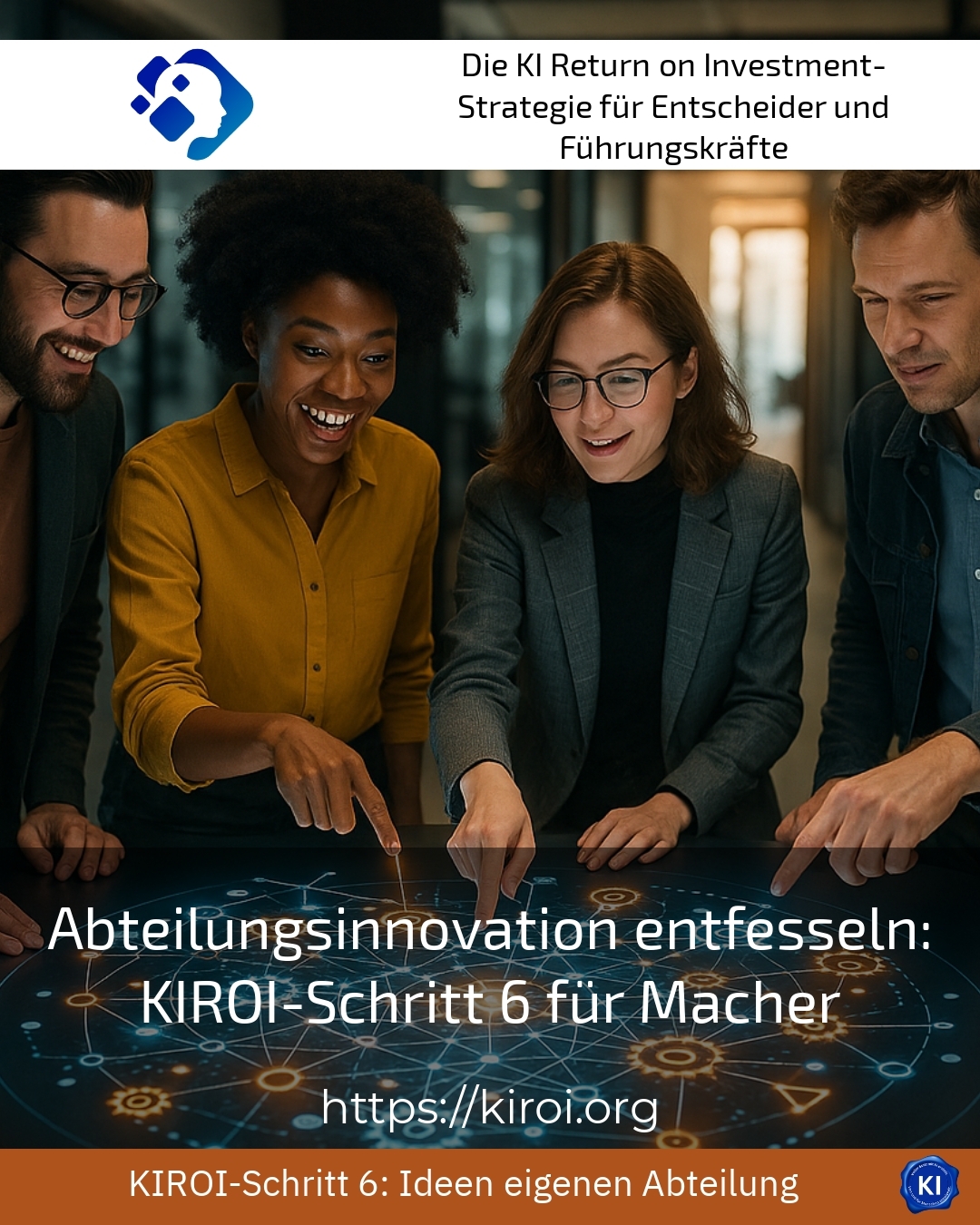Sustainably develop and support innovations in the department
Departmental innovation means developing new ideas within a team in a targeted manner and implementing them step by step. The challenge for managers is often to support their employees in recognising potential while at the same time not being overwhelmed by the multitude of possibilities. This is why the sixth phase of the KIROI strategy supports teams in the targeted stimulation and practical implementation of innovations.
Provide impetus to promote departmental innovation
For departmental innovation to succeed, it is important to systematically utilise existing resources and skills. In practice, it has been shown that AI-supported technologies can play a key role in optimising processes and promoting employee creativity. For example, a production department can use intelligent sensor technology to significantly improve product quality and minimise unplanned downtime. Sales departments often benefit from analysing extensive customer data in order to create customised offers that increase customer satisfaction and loyalty. The HR department can also use digital tools to find more suitable applicants and strengthen employee loyalty.
Practical examples from different industries
KIROI BEST PRACTICE at company XYZ (name changed due to NDA contract) In the production area, the use of intelligent sensor technology led to a significant reduction in error rates. At the same time, employees received training to enable them to make optimum use of the systems and contribute their own ideas for improvement.
KIROI BEST PRACTICE at company XYZ (name changed due to NDA contract) In sales, customer data was precisely analysed with the help of artificial intelligence. This enabled offers to be customised and marketed more successfully, which had a positive impact on sales.
KIROI BEST PRACTICE at company XYZ (name changed due to NDA contract) The HR department used AI-supported selection processes to select applicants in a more targeted manner. This left more time to support the employees hired and improved the accuracy of the hiring process.
Support instead of a quick fix: Promoting sustainable implementation
Innovation needs room to grow and a guiding hand. This is why the KIROI strategy does not offer quick fixes in the sixth step, but supports departments with targeted impulses and adaptable methods. Clients often report that such a structured approach promotes new ways of thinking that ultimately lead to sustainable results. It is important to involve everyone involved and enable continuous learning processes.
This allows employees to contribute their individual strengths and work together to improve processes. Such an atmosphere not only increases innovative strength, but also leads to greater motivation and identification with the department's goals.
Increased efficiency through targeted digital support
In many cases, departmental innovation significantly increases efficiency. The combination of human creativity and AI technologies makes it possible to automate repetitive tasks and focus on value-adding activities. For example, by using AI campaign planning tools, a marketing team can develop personalised customer approaches that are more effective than standardised methods.
Furthermore, digital support enables better monitoring of results and rapid adaptation to changing market conditions. This keeps the department flexible and competitive.
My analysis
Departmental innovation is a process that requires targeted impetus, strategic support and the active involvement of employees. The sixth phase of the KIROI strategy focuses precisely on this and provides practical methods to facilitate sustainable change. Companies report that this approach has noticeably improved the efficiency and innovative capacity of their departments. This shows that innovation is not a one-off event, but an ongoing process that can be successfully organised with sensitive support.
Further links from the text above:
Mastering departmental innovation: Step 6 to the top idea with KIROI [1]
Driving departmental innovation: Focus on KIROI Step 6 [2]
AI as a threat or an opportunity in times of skills shortages? [4]
For more information and if you have any questions, please contact Contact us on the topic or read more blog posts on the topic Artificial Intelligence Blog here.















